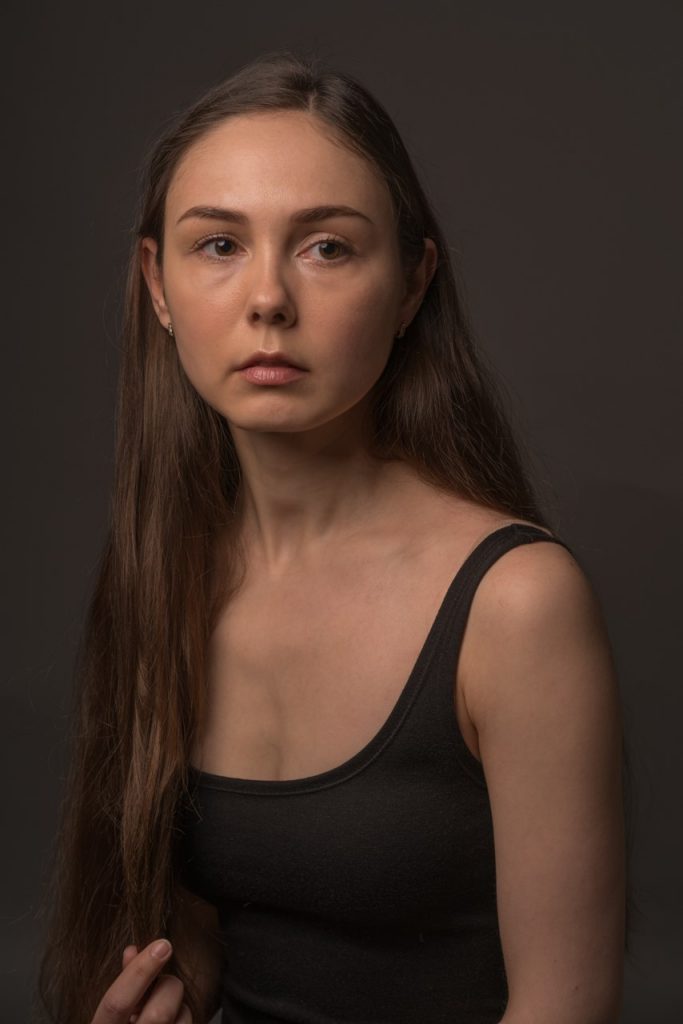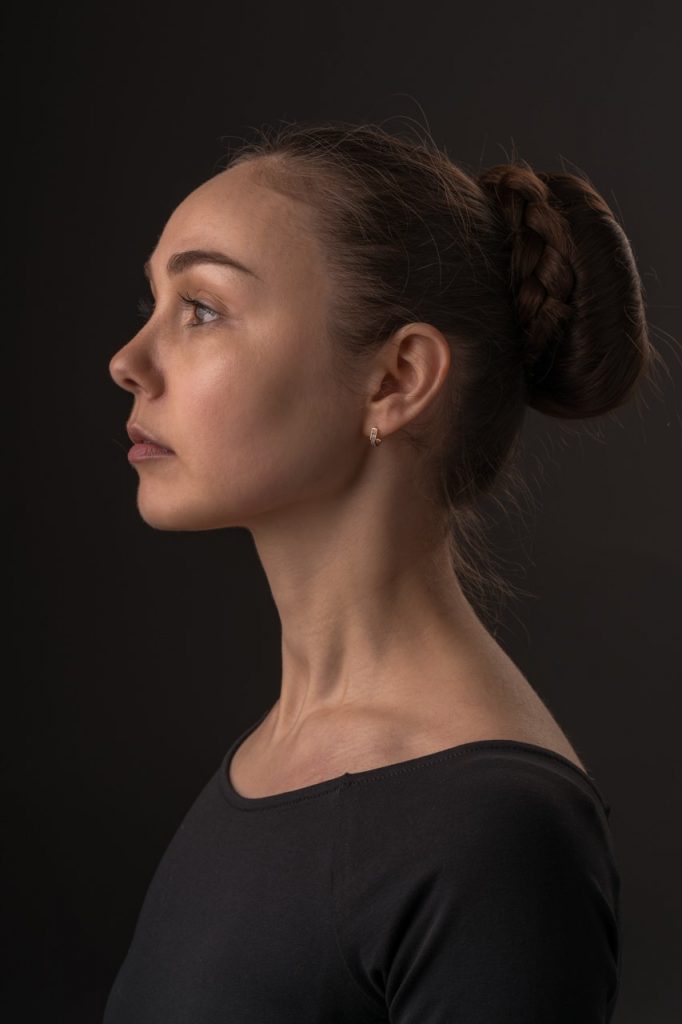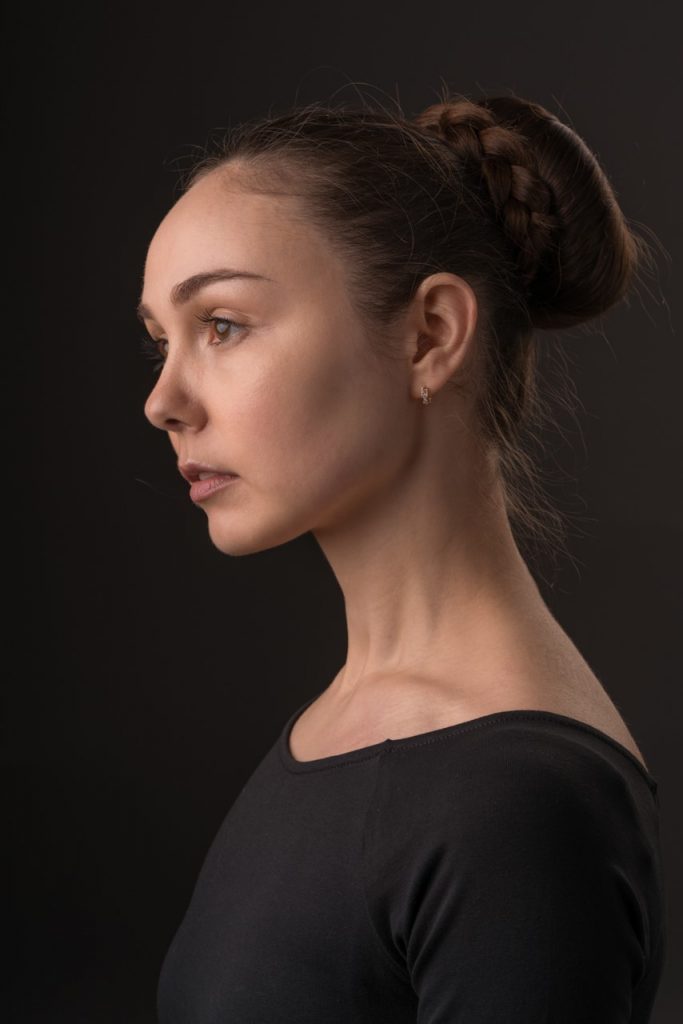During the course of a portrait shoot – which would normally last about three hours – I’ll take around 300 images. The subject will normally change outfit and hairstyle if appropriate during the course of the shoot.
Part of the process is for me to get to know the subject and the possibilities they present.
I will normally shoot on a tripod, which I find allows me to concentrate totally on the subject and more or less forget about the camera. If I’m in a studio I will normally set the camera to f8 @ 125th of a second, always focusing on the nearer of the subject’s eyes. I’ll use minimum ISO which in the case of my camera, Sony AR73, is 50. I also use auto eye focus where the camera will track the subjects eye, always keeping it in focus.
I’ll spend a good deal of time talking to the subject, giving them direction on how I would like them to move. I’m not a fan of static posing. I much prefer using slow dynamic movements.
I’ll ask them to move in a particular way then pause for a beat, and then repeat until I ask them to stop and rest. I’ll also ask them to try express in their look some emotion. While the subject is performing their movement, I’ll be watching for the moment that I think may make the best shot. As they repeat the movement I have a number of opportunities to get the shot I’m after. I normally have an idea of what I’m after and will shoot until I think I have got the best shot I can from any particular sequence.
The shots from any one sequence can be radically different as every small movement the subject makes produces quite a different shot. This is where the challenge as a photographer rests; in choosing that decisive moment to take the shot. This is where rendering the camera as invisible and totally concentrating on the subject, in my opinion, allows me to really get to grips visually and aesthetically with the subject.
I normally find the subject likes very different shots from those I pick. I put this down to familiarity with one’s own face, in that they, the subject, are used to seeing themselves in a particular way and often what I produce is not how they are used to seeing themselves. This unfamiliarity often bring surprises. In the end I’m often shooting to please myself and not the subject.
The most time-consuming part of the process is selecting the final shots. I often have to leave them for a couple of weeks and sometimes much longer until I make the final selection. Shots that you initially think are good turn out to be among the ones rejected in the final selection.
As I spend quite some time on an edit, I want to ensure the images I pick will turn out to be successful images. Unfortunately that’s not always the case. During the edit I will remove certain blemishes and spots that I think detract from the image. I never change or distort features. I’ll always crop the image to ensure a good composition and will sometimes add in a background that I think complements the image.
I’ll produce a selection of final edits and wait a few weeks before selecting what I think works best. I find this stage difficult as I often change mind as I am my own harshest critic and am often difficult to please.











